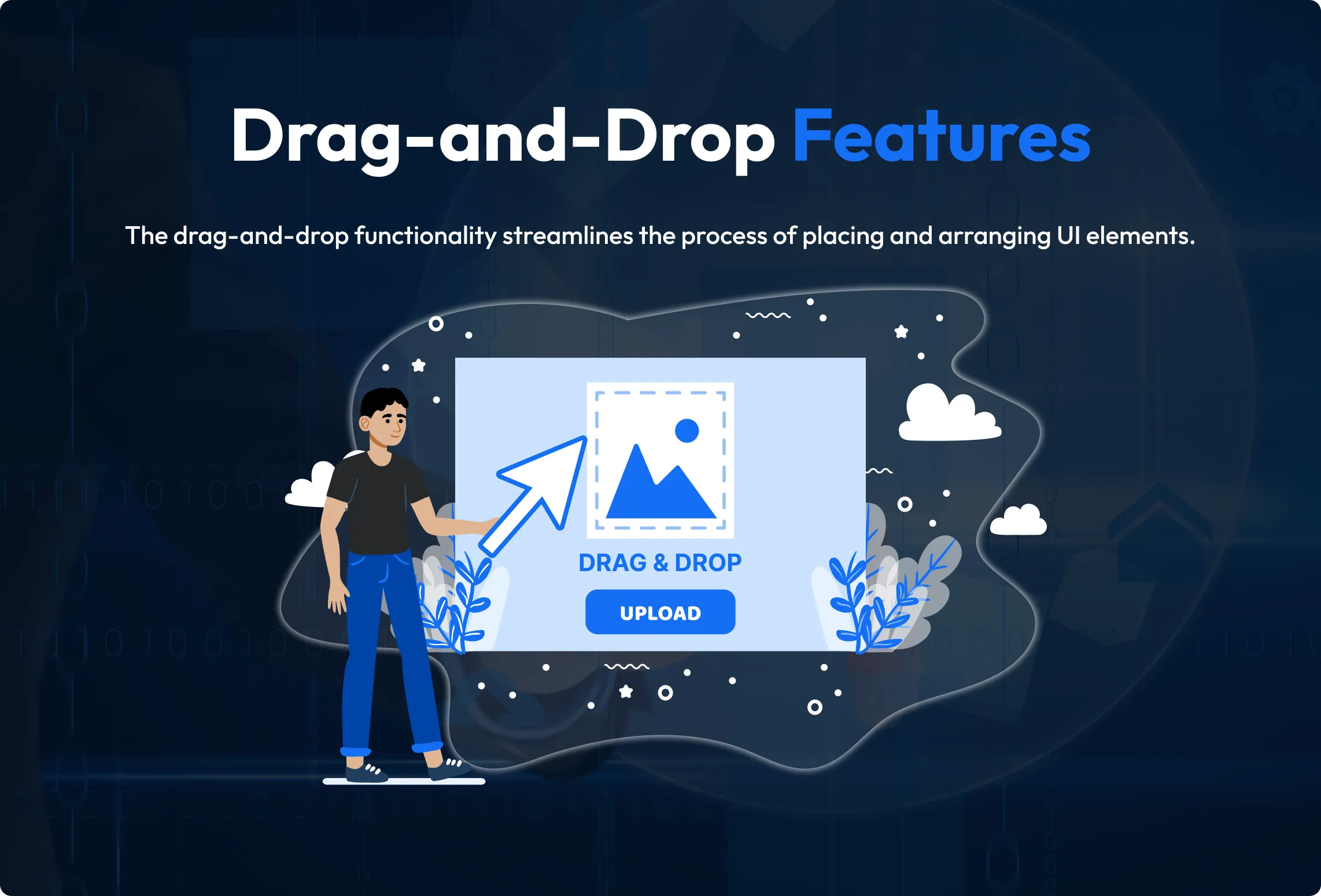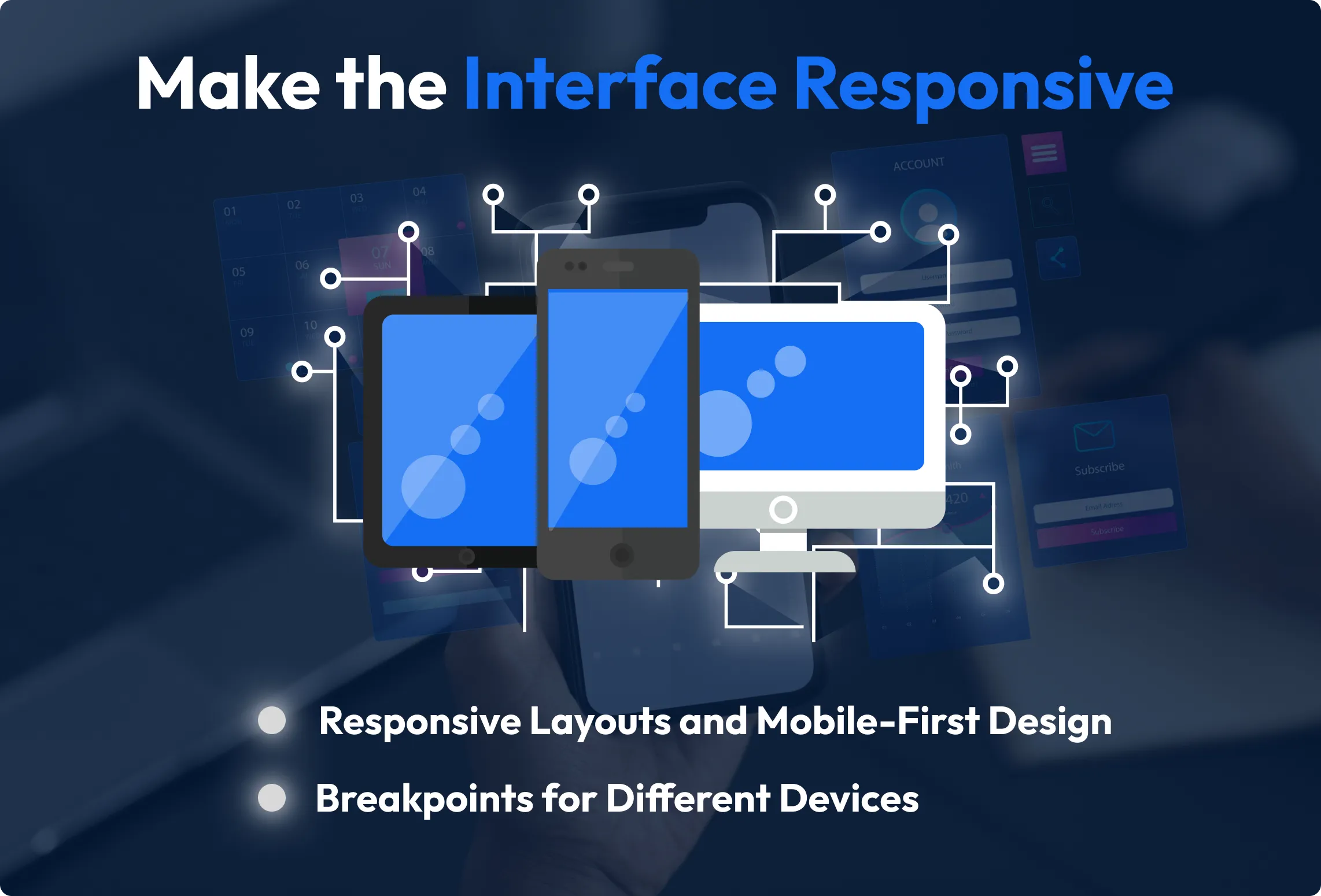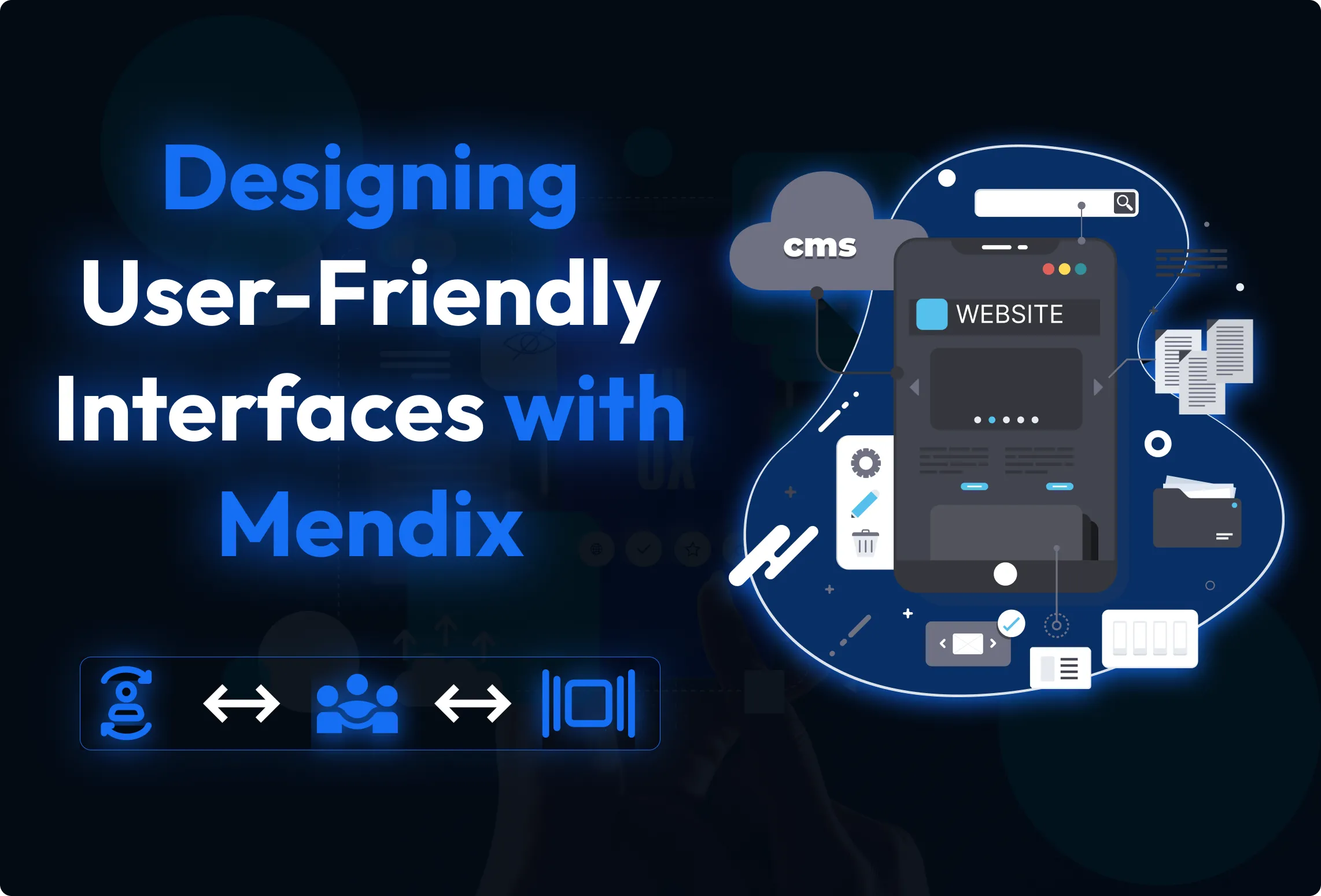Key Principles for Designing User-Friendly Interfaces in Mendix
1. Keep It Simple
Simplicity is the foundation of a user-friendly UI. The interface should be simple enough for users to use without any problems.
Widgets and Templates: Mendix provides a wide range of pre-built widgets (e.g., Data Grid, Calendar, File Upload, Charts, Buttons, Text Boxes) and templates (e.g., Blank Page, List View, Master-Detail, Login, Responsive Web, Dashboard, Navigation). These tools reduce the need for custom coding and promote consistent design.
-
Drag-and-Drop Design: The platform's drag-and-drop interface simplifies layout creation, helping developers quickly organize UI components in a clean, navigable structure.
-
Minimalist Approach: Focus only on essential features and elements. To maintain an intuitive and user-friendly interface, stay away from clutter.

2. Maintain Consistency Across the Interface
Consistency improves usability by making the app predictable and easier to learn.
-
Themes and Style Guides: Mendix includes customizable themes and style guides to maintain a cohesive visual design throughout your application.
-
Reusable Components: Reuse UI components like buttons, input fields, modals, and snippets to ensure uniformity and save development time.
-
Design Systems: Consider integrating a design system—a collection of reusable components and standards that streamline UI creation and ensure visual consistency.
3. Ensure Responsiveness
With so many devices, responsive design is essential.
-
Responsive Layouts: Mendix allows developers to build layouts that automatically adapt to different screen sizes, including desktops, tablets, and smartphones.
-
Mobile-First Templates: Templates optimized for mobile use provide a seamless experience for mobile users.
-
Device Breakpoints: Mendix supports setting breakpoints that dynamically adjust layouts based on device screen sizes.
-
Touchscreen Optimization: Use gesture-friendly controls and appropriately sized buttons to enhance usability on touch devices.

4. Optimize Performance and Speed
A fast-loading interface significantly improves the user experience and reduces drop-offs.
-
Efficient Data Handling: Mendix supports optimized database queries and smart data management techniques to maintain performance even with large datasets.
-
Reducing Load Time: Simplifying design and optimizing assets improves page load speed. Implement lazy loading images and other heavy content to enhance performance.
5. Provide Clear and Intuitive Navigation

Effective navigation helps users understand where they are and how to get where they want to go.
-
Menu Design: Use well-structured, concise navigation menus. Avoid overcrowding. A side navigation bar with clearly labeled sections (e.g., Dashboard, Profile, Settings) is ideal.
-
Breadcrumbs: Include breadcrumb trails to show the user’s path through the application. For example: Home > Products > Electronics > Smartphones > iPhone 14.
-
Search and Filters: Offer search functionality and filters to help users find content quickly. For instance, allow filtering by price, color, brand, or rating in e-commerce apps.
-
Optimized User Flows: Place commonly used features, such as account settings and notifications, in easily accessible areas (e.g., headers or footers).
Conclusion
Designing user-friendly interfaces is essential for building applications that users enjoy using. With Mendix's robust low-code platform, developers can create intuitive, responsive, and high-performing UIs without the complexity of traditional development.
By applying principles such as simplicity, consistency, responsiveness, and performance optimization, you can craft interfaces that not only look appealing but also function flawlessly.
